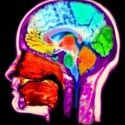This Is Your Mom on Drugs: Aging Doesn't Stop Drug Use
It’s the kind of tongue-in-cheek concept that might have percolated out of the subversive imagination of R. Crumb, underground cartoon chronicler of the 1960s. Grandma and Grandpa are passing the time in their rockers—and passing a joint back and forth as they recall their youthful marijuana-smoking days in Haight-Ashbury. In fact, according to three investigators at the National Institute on Drug Abuse, the image is no joke.
Writing in the journal Neuropsychopharmacology, Gayathri J. Dowling, Susan R. B. Weiss and Timothy P. Condon warn that many aging baby boomers, long accustomed to using illicit drugs for recreation and medicinals of all kinds for treating whatever ails them, will carry their love affair with drugs into old age. Medicine is only beginning to appreciate the consequences.
The baby boomers, the generation born between 1946 and 1964, make up 29 percent of the U.S. population today. By 2030 this “pig in the python” of the nation’s age-distribution profile will swell the number of people aged 65 and older to 71 million. The baby boomers, of course, became well known in the 1960s for their significantly higher use of illicit drugs than that of preceding generations. At one time, investigators were convinced that as people aged, they would “grow out of” the use of recreational drugs. There is little evidence that any such thing has taken place today.
Dowling and his colleagues cite hospital data that record the number of people aged 55 and older who sought emergency-room treatment and mentioned using various drugs. The number of cocaine mentions rose from 1,400 in 1995 to almost 5,000 in 2002, an increase of 240 percent. Similarly, mentions of heroin increased from 1,300 to 3,400 (160 percent), marijuana from 300 to 1,700 (467 percent) and amphetamine from 70 to 560 (700 percent).
Data from the National Survey on Drug Use and Health corroborate those trends. In 2002 some 2.7 percent of adults between 50 and 59 admitted to illicit drug use at least once in the preceding year. By 2005 that number had increased significantly, to 4.4 percent. The investigators attribute the rise to the aging baby boomers, as well as to enhanced longevity coupled with people’s tendency to retain their long-held patterns of drug use as they grow older. Those numbers will put substantial new strains on the medical system: by one estimate, the number of adults aged 50 and older treated for drug abuse will rise from 1.7 million in 2000 and 2001 to 4.4 million in 2020.
Of most concern to Dowling and his colleagues are the effects of drug abuse on the brain. The systems most affected are the ones involving the neurotransmitters dopamine, serotonin and glutamate, and all three systems change with age. The ability of receptors to bind dopamine, for instance, declines with age, and those declines often lead to some loss of motor and cognitive functioning. Cocaine users and the elderly exhibit similar brain changes, so seniors who use cocaine could be compounding the damage.
Intriguingly, the so-called cannabinoid system, which mediates the effects of marijuana in the brain, reduces addictive behavior in aging mice that have been genetically altered to crave alcohol. As the mice age, the cannabinoid receptor binds less frequently to a specific protein, which seems to diminish the animals’ taste for alcohol. No one knows how aging may alter the cannabinoid system in people, but the system has wide-ranging effects on appetite, memory, addiction, and the perception of pain and pleasure.
Aging also leads to changes in metabolic rates and, in particular, in the processes whereby a drug is absorbed, distributed, metabolized and eliminated. The changes can lead to what Dowling and his colleagues call “devastating consequences” from the use of alcohol as well as from the abuse of medicines and illicit drugs. As older bodies become lean, water content is reduced and kidneys become less efficient; the concentration of a drug in the blood can remain high for a much longer time than it does in a younger person. That, in turn, poses the additional risk of adverse drug interaction, as high concentrations of various substances overlap in the blood.
The increased health risks become particularly hard to assess in connection with abused drugs because of the ethical bind it imposes on physicians. If a patient reports drug use, a doctor should include that fact in the patient’s notes because of its potential effects on future treatment. But despite privacy protections under the law, many physicians hesitate to do so for fear of insurance and legal complications. For those reasons (and perhaps others), medical personnel are reluctant to question their patients’ drug use, according to Dowling and his colleagues. Consequently, serious problems may go untreated.
In spite of what can be inferred about the effects of drugs on the aged, relatively little has been studied systematically. That lack of attention traces directly to the traditional—and now demonstrably false—assumption that the elderly do not abuse drugs, particularly illicit drugs. But the nation may soon discover that the pig will move more painfully through the python than anyone could have imagined.
____________
source: Scientific American

